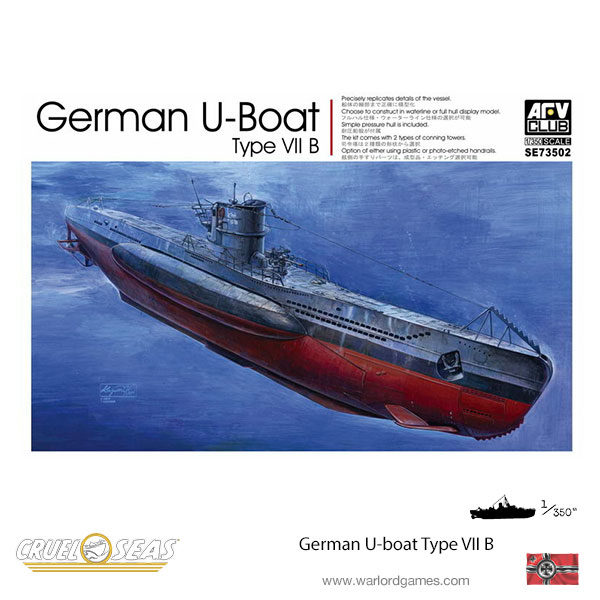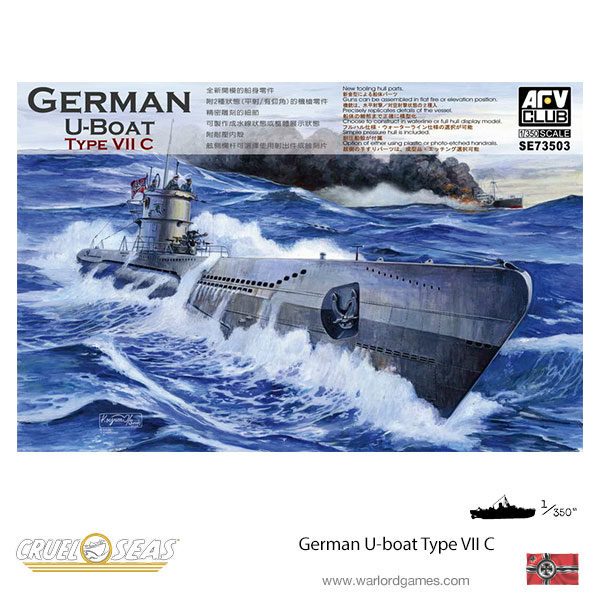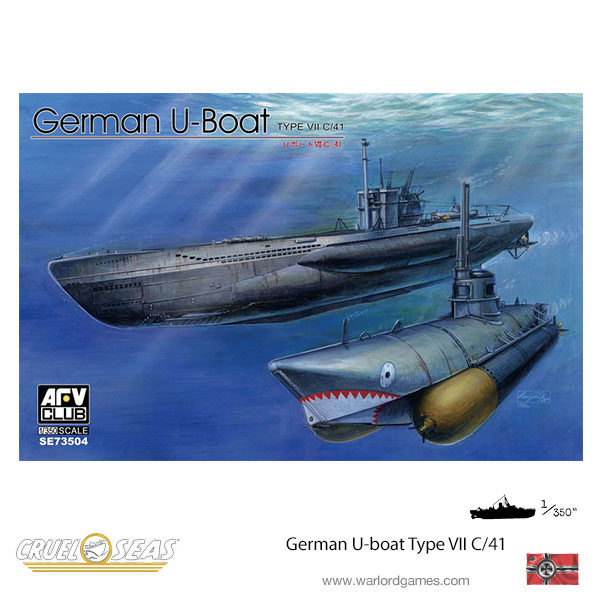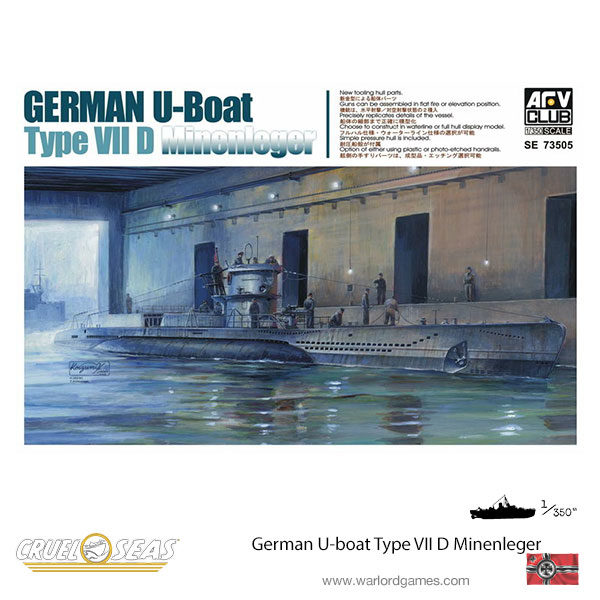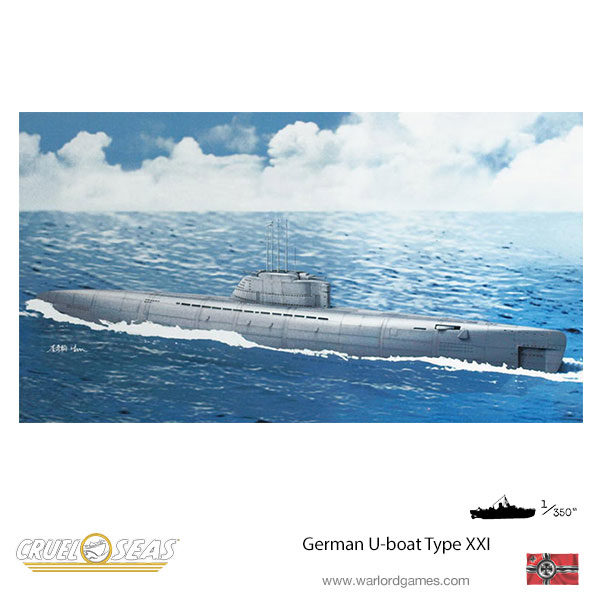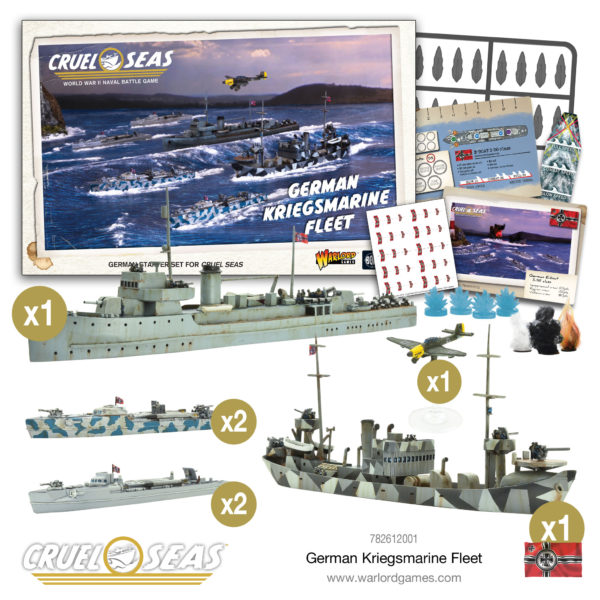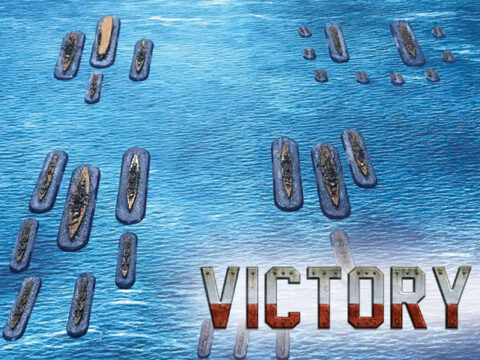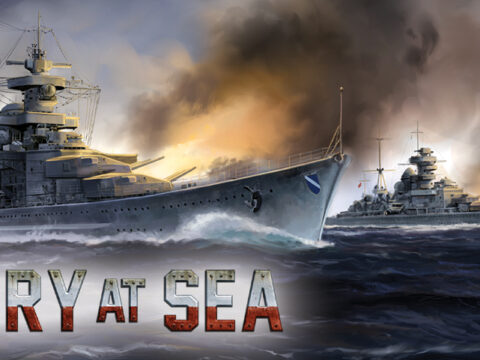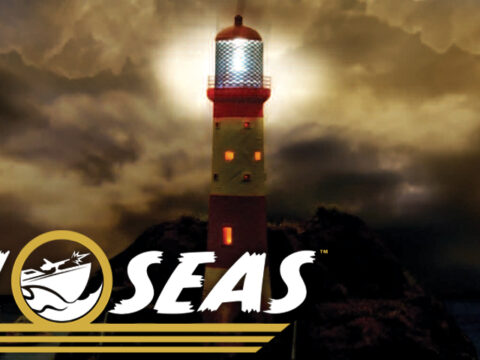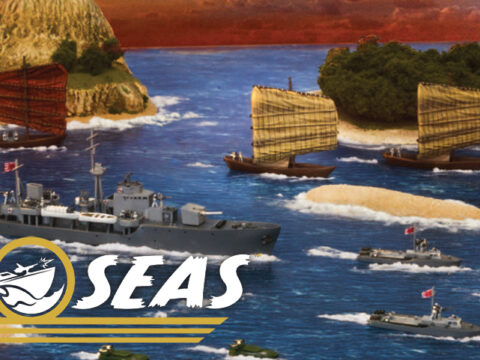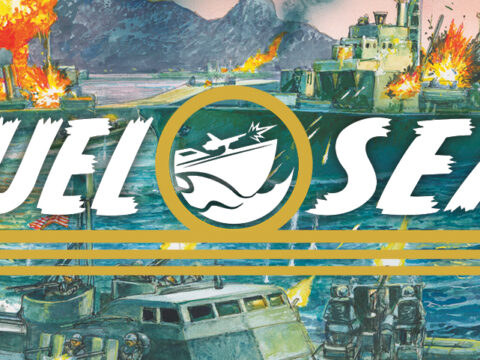Highly detailed Naval model maker AFV Club produce an excellent range of naval vessels, including these German U-boats; Type, XXI, VII B, VII C, VII C/41 and D Minenleger.
German U-boat Type VII B
In March 1935, as the chancellor and the head of state Adolf Hitler repealed Part V of the Versailles treaty. Three months later, the new U-1 launched. This type IIA coastal patrol U-Boat is an implementation of plans from the previous war and with new designs. In April 1936, the Type I was commissioned into the German Navy.
Later on, the German Navy produced the Type III and IV, all served as a basis for the development of the VII class, which was introduced in July 1936. To meet different demands, the Type VII had several modifications. Type VII submarines were the workhorses of the German WWII U-Boat fleet, they the most widely used U-Boats of the war and were the most produced submarine class in history. To overcome the major drawback of VIIA, limited fuel capacity, the VIIB has an additional 33 tones of fuel in an external saddle. Powered by two supercharged MAN diesel engines, the VIIB has also increased speed on the surface.
Note: This is a detailed plastic model designed for display – to convert to use in Cruel Seas will take a modicum of skill
German U-boat Type VII C
The Type VIIC was based on its predecessor Type B, with increased fuel capacity. Although it gained longer operation range, it also had a larger displacement which slowed down the speed. The Type VIIC was placed in mass production from 1940 by no less than 15 shipbuilders in Germany, it became the most numerous type of all U-Boats in WWII.
Note: This is a detailed plastic model designed for display – to convert to use in Cruel Seas will take a modicum of skill
German U-boat Type VII C/41
To improve combat survivability and maximum depth, from October 1944 newly built VIIC U-Boats were equipped with a thicker and stronger pressure hull, known as VIIC/41. New VIIC/41s enjoyed 20% deeper crush depth, although the hull was enlengthened 13cm.
To balance it, revised interior arrangement, lighter equipment and smaller displacement were implemented, rendering the VIIC/41 to have an identical cruise speed as the VIIC. The VIIC/41s were commissioned from 1943, and a small batch of 1944-built VIIC41s were even equipped with rotating sonar so that scanning angles were less limited.
Note: This is a detailed plastic model designed for display – to convert to use in Cruel Seas will take a modicum of skill
German U-boat Type VII D Minenleger
The Type VIID, based on its predecessor but with lengthened hull was also ready. Like its predecessor, the Type VIID was able to launch attacks by means of torpedoes. It also equipped with fiver vertical tubes just aft of the conning tower to deposit up to 39 mines. Thanks to this stealth, the Type VIID was able to deploy miles at strategical locations, such as enemy coasts, outside harbours and important shipping routes.
The Type VIID had larger fuel capacity than Type VIIC, but due to its larger size, the former was inferior in terms of manoeuvrability, top speed and cruise time. There were six Type VIID submarines (U-213 to U-218) commissioned, from August 1941 to May 1942. Yet, till the end of WWII, only 9 minelaying missions were executed.
For the rest of the missions, the Type VIID was used as a regular submarine. The 88mm gun was unmounted in May 1943, in exchange for two 20mm anti-aircraft cannons aft of the conning tower. This modification retained until the end of WWII.
Note: This is a detailed plastic model designed for display – to convert to use in Cruel Seas will take a modicum of skill
German U-boat Type XXI
The German U-Boat Type XXI, which was developed during the later stage of WWII, was a significant milestone in vessel-building history. This diesel powered U-Boat adapted a streamlined layout, which not only allowed it to travel undersea faster but also made it difficult to be detected by enemy sonar. Moreover, its onboard food refrigerating device also enables its crew to carry out long-term underwater missions.
Unlike its predecessors that had to rise up to sea level for torpedo launching, the Type XXI, equipped with hydraulic torpedo tubes, was able to launch and reload torpedoes 120 meters under sea level, making it the first submarine capable of underwater combat.
Although appeared too late to turn the tide of war, a total of 118 Type XXI U-Boats were produced from spring 1944 till the end of the war, posing a serious threat to Allied escort fleets in the Atlantic. Nevertheless, its advanced design had also become a paragon for many modern submarine designs.
Note: This is a detailed plastic model designed for display – to convert to use in Cruel Seas will take a modicum of skill
Join the Kriegsmarine!
The mighty fleet awaits your command, Step on board your M-class minesweeper and take to the Cruel Seas.

